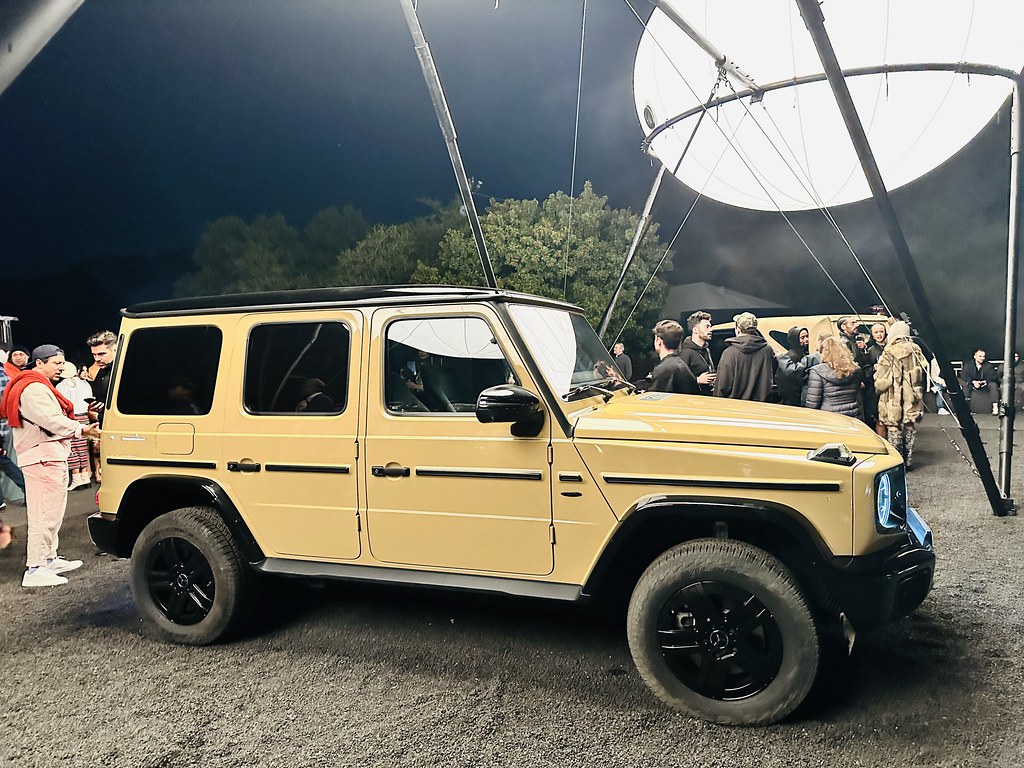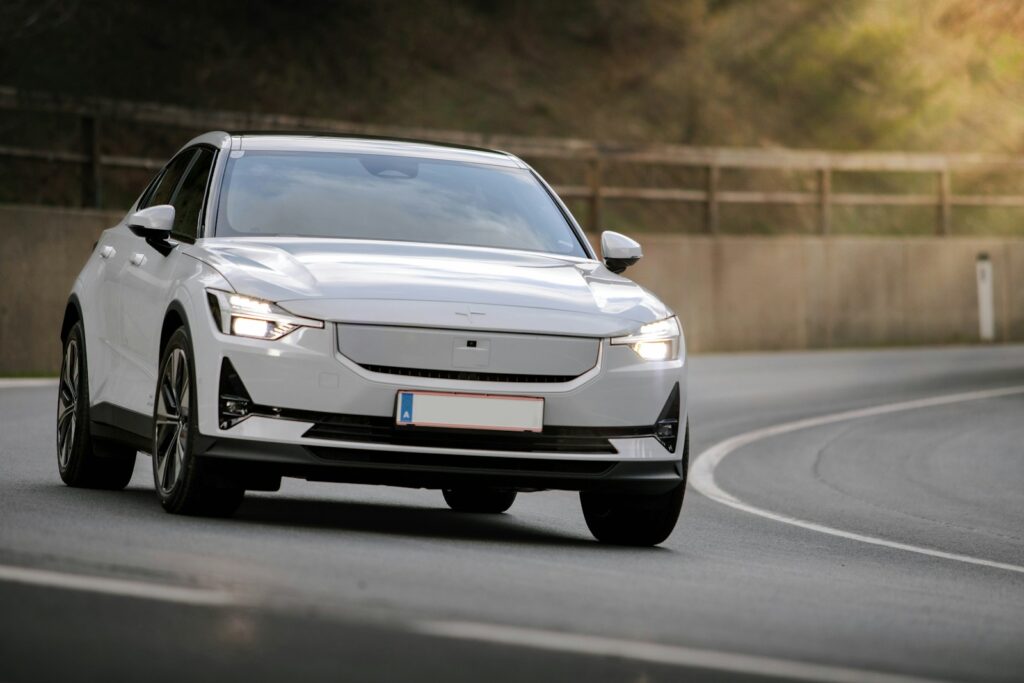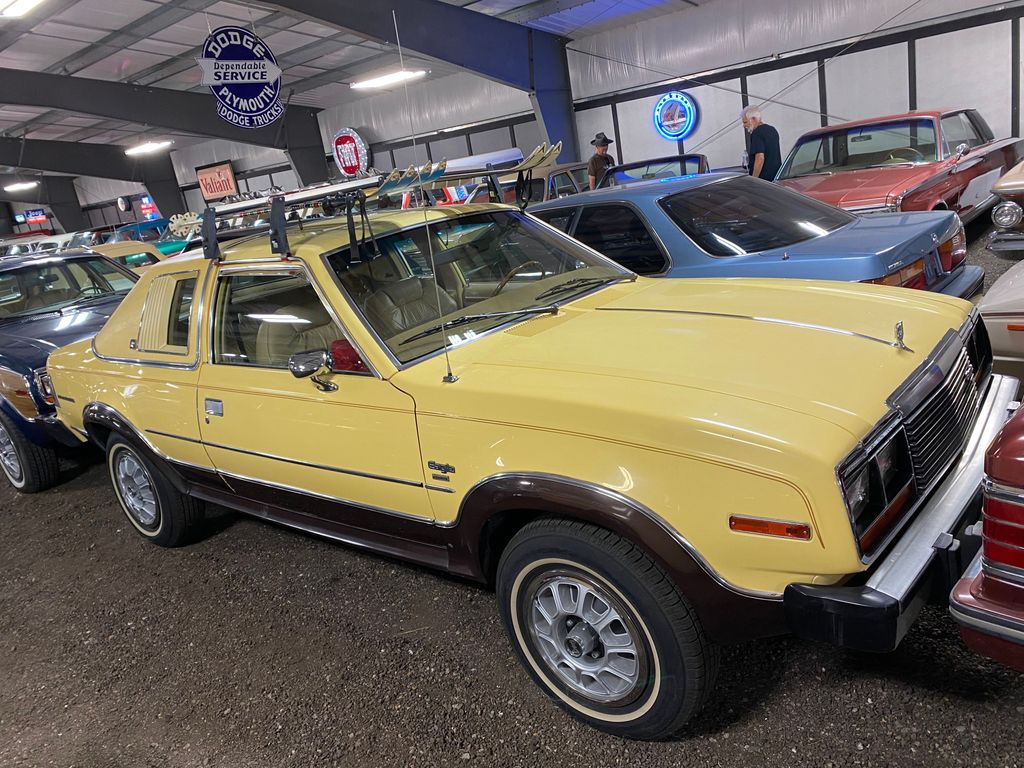
The 1980s stand as an absolutely electrifying chapter in the annals of automotive history, a decade where engineers and designers dared to dream big and push the envelope. This was a period defined by a relentless pursuit of speed, groundbreaking technological leaps, and a distinctive aesthetic that stamped its mark on everything from daily drivers to the most exclusive supercars. From the raw power of turbocharged engines to the futuristic glow of digital dashboards, innovation wasn’t just encouraged; it was the driving force behind a generation of vehicles that continue to captivate enthusiasts and collectors worldwide.
This era birthed a collection of rare and iconic machines that collectively tell a powerful story of automotive ambition. Manufacturers around the globe were in a race to redefine luxury, performance, and style, resulting in cars that transcended mere transportation to become cultural touchstones. These vehicles, often produced in limited numbers, showcased everything from advanced aerodynamics that sliced through the air to the unmistakable charm of pop-up headlights that epitomized the era’s cool factor.
Join us on an exhilarating journey as we delve into some of the most captivating and historically significant rare cars from the 1980s. Each one is a testament to the ingenuity and daring spirit of its creators, offering a unique blend of engineering brilliance, design flair, and a driving experience unlike any other. These are the machines that didn’t just turn heads; they changed the course of automotive development, cementing their status as true icons of performance, innovation, and unforgettable style.
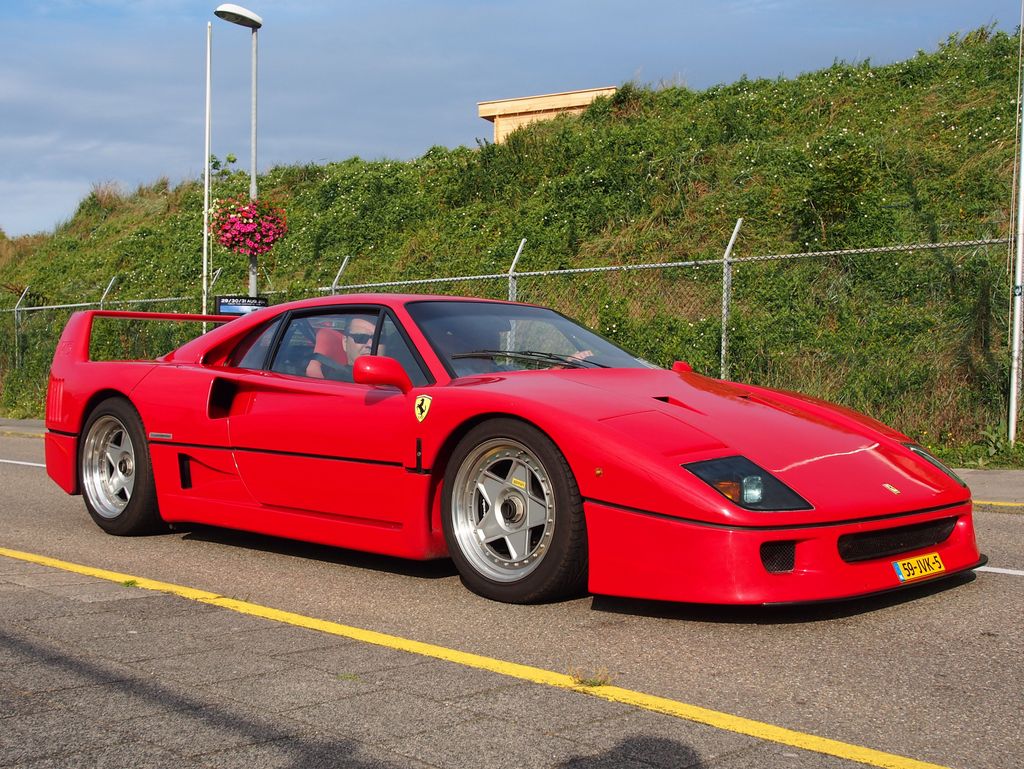
1. **1989 Ferrari F40**The Ferrari F40 stands as an enduring monument to automotive passion, specifically built to commemorate Ferrari’s 40th anniversary. It was the last model personally approved by the legendary Enzo Ferrari himself, lending it an almost mythical status. Beneath its aggressive, race-inspired bodywork lay a 2.9-liter twin-turbo V8 engine, a marvel of engineering that unleashed a staggering 471 horsepower. This immense power made it the fastest and most powerful Ferrari of its time, a true benchmark for supercar performance.
The F40’s raw, unfiltered performance was its defining characteristic. While many high-performance cars of the era began incorporating electronic driving aids, the F40 offered a purist’s experience, delivering its power directly to the driver with nothing to dilute the sensation. Its lightweight construction, achieved through advanced composite materials, contributed significantly to its blistering performance and agile handling. The iconic gated shifter, a hallmark of classic Ferraris, further enhanced the visceral connection between car and driver, making every gear change an event.
Beyond its street prowess, the F40 carried a deep competition DNA, with LM and Competizione versions eventually gracing tracks worldwide and cementing its formidable reputation. The design itself drew directly from Ferrari’s extensive racing experience, with aerodynamics and lightweight construction techniques shaping every line of the car. Only 1,315 examples were built between 1987 and 1992, making the F40 one of the most sought-after collectibles, a performance icon whose values regularly top $1.5 million today, proving its enduring legacy.
Car Model Information: 1990 Ferrari F40
Name: Ferrari F40
Manufacturer: Ferrari
Production: 1987–1996,1,311 produced (including LM, Competizione and GTE)
Class: Sports car
Assembly: Maranello
Predecessor: Ferrari 288 GTO
Successor: Ferrari F50
BodyStyle: berlinetta
Layout: Longitudinal engine,Rear mid-engine, rear-wheel drive layout
Engine: cvt,twin-turbo
Powerout: cvt,cvt
Transmission: manual transmission
Wheelbase: cvt
Length: cvt
Width: cvt
Height: cvt
Weight: cvt
Sp: uk
Designer: ill
Categories: 1990s cars, 24 Hours of Le Mans race cars, All articles with unsourced statements, Articles with short description, Articles with unsourced statements from July 2023
Summary: The Ferrari F40 (Type F120) is a mid-engine, rear-wheel drive sports car engineered by Nicola Materazzi with styling by Pininfarina. It was built from 1987 until 1993, with the LM, Competizione and GTE race car versions continuing production from 1994 to 1996 respectively. As the successor to the 288 GTO (also engineered by Materazzi), it was designed to celebrate Ferrari’s 40th anniversary and was the last Ferrari automobile personally approved by Enzo Ferrari. At the time it was Ferrari’s fastest, most powerful, and most expensive car for sale.
The car debuted with a planned production total of four hundred units and a factory suggested retail price of approximately US$400,000 (fivefold the price of its predecessor, the 288 GTO) in 1987 ($1,110,000 today). One of those that belonged to the Formula One driver Nigel Mansell was sold for the then record of £1 million in 1990, a record that stood into the 2010s. A total of 1,311 to 1,315 cars were manufactured with 213 units destined for the United States.
Get more information about: Ferrari F40
Buying a high-performing used car >>>
Brand: Ferrari Model: F40
Price: Not Priced Mileage: 3,511 mi.
Read more about: Beyond the Auction Block: Unearthing 14 Surprisingly Affordable Classic Cars for Enthusiasts Today
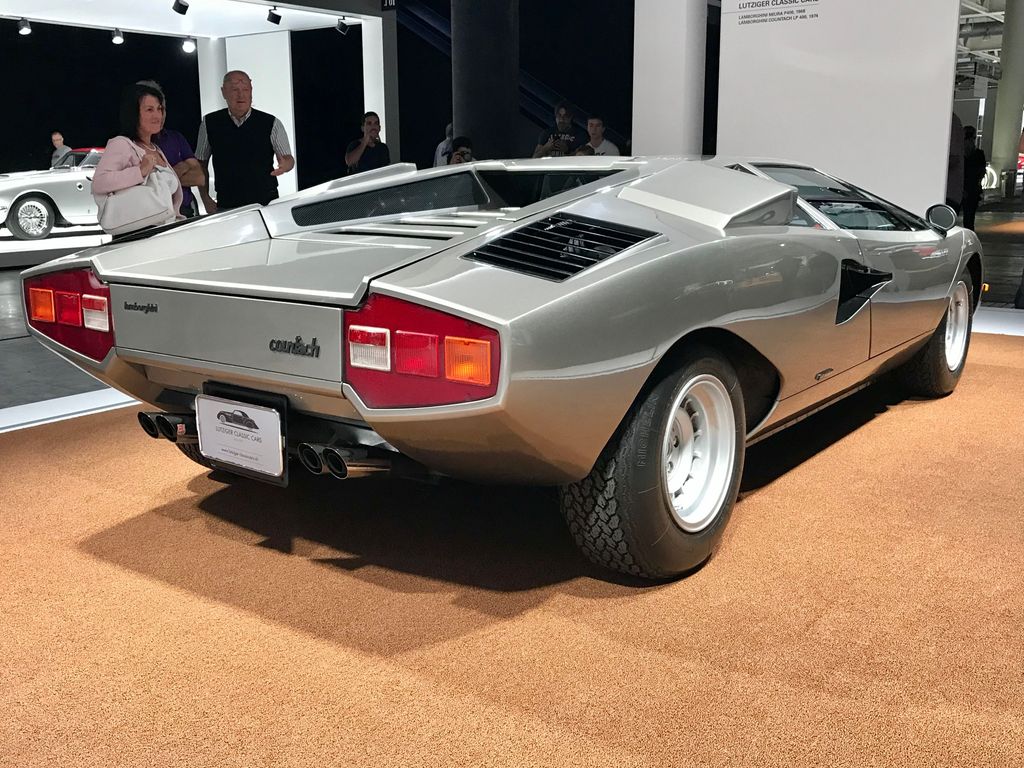
2. **Lamborghini Countach**If any single automobile could embody the audacious spirit and unbridled excess of the 1980s, it would undeniably be the Lamborghini Countach. Its sheer presence was a rolling spectacle, defined by signature scissor doors that ascended like wings, a razor-sharp wedge-shaped profile, and proportions that were nothing short of outrageous. This car wasn’t just transportation; it was a dramatic statement, turning heads and capturing imaginations everywhere it went.
The LP5000 Quattrovalvole, arriving in 1985, pushed the Countach’s already extreme design to its zenith. Buyers could even specify the colossal rear wing, an undeniable defining feature that further amplified its aggressive stance. While the Countach first made its appearance in the 1970s, its flamboyant style found its perfect home in the visually driven decade of the 1980s. Powering this automotive icon was a 5.2-liter V12 engine, a beast that roared with a sound as dramatic and awe-inspiring as the car’s looks.
Driving a Countach was an immersive sensory experience, truly unlike anything else on the road. Beyond its undeniable performance, the Countach transcended its status as a mere car to become a profound cultural symbol. It famously graced movie screens, starred in music videos, and adorned countless bedroom walls as posters, effectively becoming shorthand for aspirational success. Its name, “Countach,” derived from a Piedmontese dialect exclamation of astonishment, perfectly encapsulated the reaction it provoked, ensuring its lasting legacy as a revolutionary design that continues to influence modern Lamborghinis.
Car Model Information: 1986 Lamborghini Countach LP5000 Quattrovalvole
Name: Lamborghini Countach
Caption: Lamborghini Countach LP5000 QV
Manufacturer: Lamborghini
Production: 1974–1990
Assembly: Sant’Agata Bolognese
Designer: Marcello Gandini
Class: Sports car
BodyStyle: coupe
Layout: Longitudinal engine,mid-engine,rear-wheel-drive
Related: Lamborghini LM002
Engine: Lamborghini V12,V12 engine,LP400, LP400 S: {{cvt,3929,cc,L,1,disp=flip
Transmission: synchromesh,Manual transmission
Wheelbase: 96.46 in
Abbr: on (LP5000QV)
Order: flip
Length: 162.99 in
Width: LP 400: {{cvt,74.28,in,mm,0,abbr=on,order=flip
Height: 42.13 in
Weight: {{convert,1300.5,kg,lb,0,abbr=on
Predecessor: Lamborghini Miura
Successor: Lamborghini Diablo
Doors: Scissor doors
Sp: uk
Categories: 1980s cars, 1990s cars, All articles with unsourced statements, Articles containing Italian-language text, Articles containing Piedmontese-language text
Summary: The Lamborghini Countach ( KOON-tahsh) is a rear mid-engine, rear-wheel-drive sports car produced by the Italian automobile manufacturer Lamborghini from 1974 until 1990. It is one of the many exotic designs developed by Italian design house Bertone, which pioneered and popularized the sharply angled “Italian Wedge” shape.
The wedge style was introduced to the public in 1970 with the Lancia Stratos Zero concept car. The first showing of the Countach prototype was at the 1971 Geneva Motor Show, as the Lamborghini LP500 concept.
The “Countach” nameplate was reused for the Sián-based limited-production hybrid-electric model called the Countach LPI 800-4 in 2021.
Get more information about: Lamborghini Countach
Buying a high-performing used car >>>
Brand: Lamborghini Model: Countach
Price: $674,900 Mileage: 15,743 mi.
Read more about: Unearthing the Gems: 14 Rare Cars of the 1970s That Defined an Era of Power and Panache
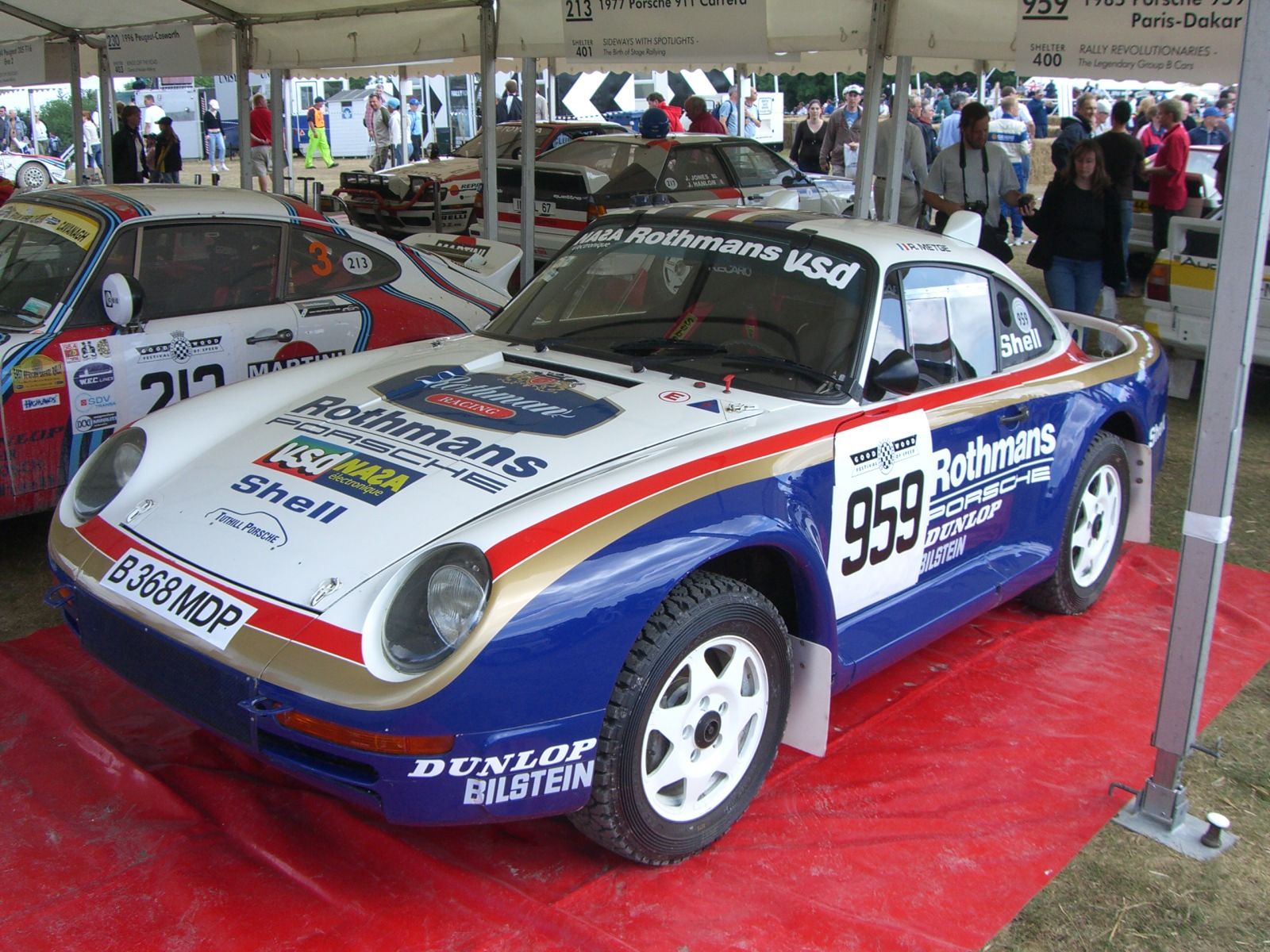
3. **1986 Porsche 959**The Porsche 959 emerged as a technological tour de force upon its debut in 1986, setting unprecedented standards for automotive engineering. Conceived initially for the demanding Group B rally racing series, this remarkable machine was laden with features that were simply unheard of in a production car at the time. It boasted an advanced all-wheel-drive system, actively adjustable ride height, and a sophisticated twin-turbo flat-six engine that delivered a formidable 444 horsepower, showcasing Porsche’s relentless pursuit of innovation.
At its launch, the 959 instantly claimed the title of the world’s fastest production car, with a verified top speed of an astonishing 197 mph. This incredible feat was a testament to how cutting-edge engineering could masterfully combine raw speed with precision control. Its development served as a literal rolling laboratory for Porsche, allowing engineers to refine systems that would later become foundational to future high-performance models, especially within the iconic 911 lineup.
Production of the 959 was meticulously limited, with only 292 customer cars ever built, bringing the total number, including prototypes and special versions, to just 337. Its advanced nature meant it was initially too progressive for U.S. regulations, preventing immediate registration without extensive, costly modifications. However, its eventual legality under the “Show or Display” exemption further amplified its exclusivity, making it a highly coveted collector’s item whose values today regularly soar well above $1 million, a true testament to its pioneering spirit and lasting impact.
Read more about: Unveiling Japan’s Automotive Crown Jewels: 15 Ultra-Rare Masterpieces for the True Enthusiast
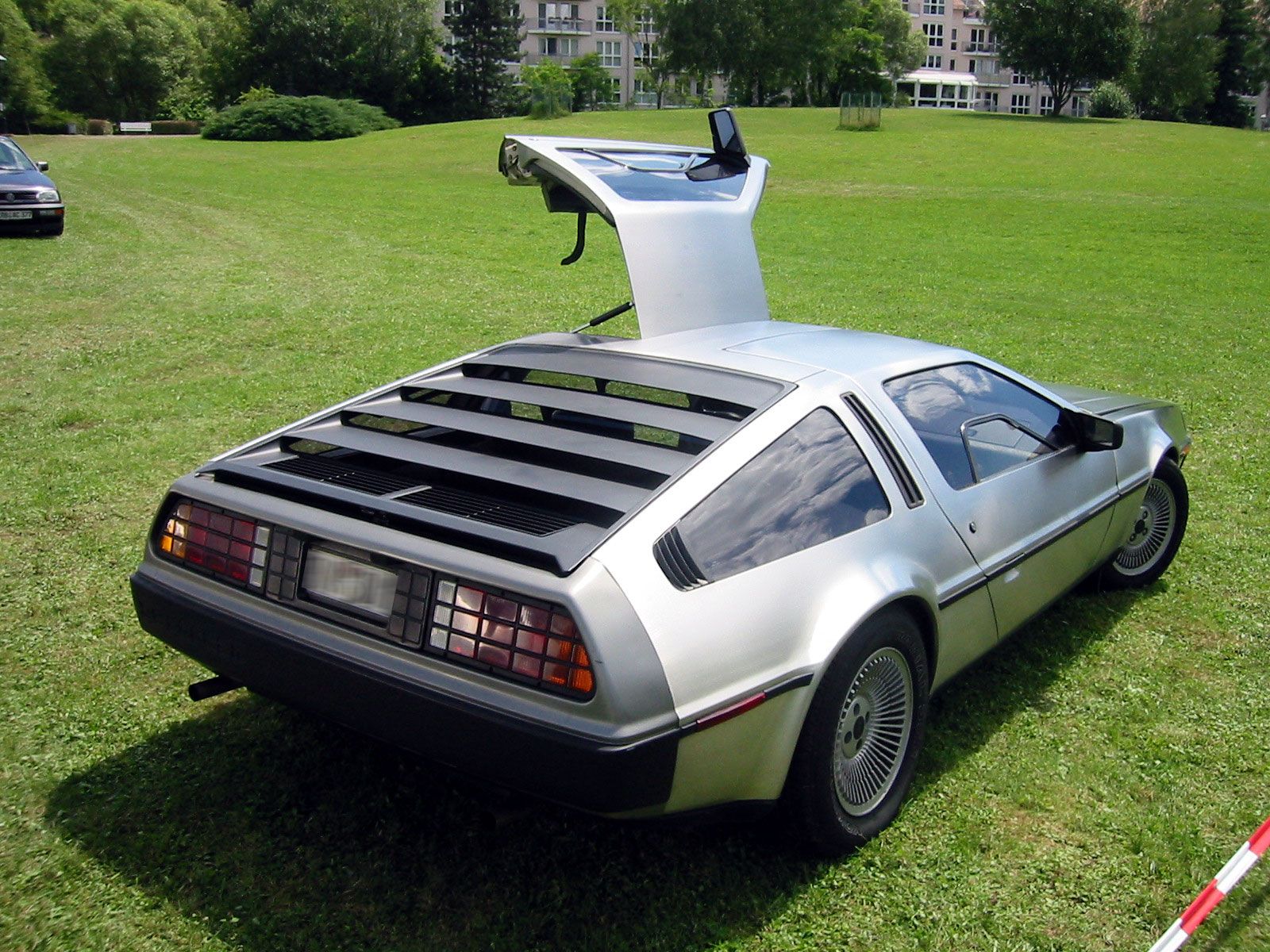
4. **1981 DeLorean DMC-12**Few automobiles possess the magical ability to ignite the imagination quite like the DeLorean DMC-12. This distinctive vehicle earned its cultural immortality through a combination of its iconic stainless steel body panels, the dramatic flair of its gull-wing doors, and, of course, its starring role as a time machine in the universally beloved Back to the Future film franchise. Despite a regrettably short production run, the DMC-12’s unique design and cinematic fame have secured its indelible place in history.
Founded by the visionary former GM executive John DeLorean, the company managed to build approximately 9,000 cars between 1981 and 1983 before financial difficulties ultimately led to its closure. The car’s instantly recognizable and futuristic design was the brainchild of Giorgetto Giugiaro, one of Italy’s most celebrated automotive stylists. His work resulted in a vehicle that looked unlike anything else on the road, truly from another time and place.
While its 2.85-liter V6 engine, sourced from Renault, produced a rather modest 130 horsepower, the DMC-12’s appeal was never solely about raw performance. Its character, futuristic aesthetic, and pop culture significance were its true strengths. When Back to the Future premiered in 1985, the DeLorean’s narrative took a dramatic turn, transforming from a commercially challenged venture into an undeniable pop culture icon. This resurgence of interest, coupled with the ongoing support from a dedicated community and Texas-based company that acquired remaining parts, continues to fuel its legacy, demonstrating how exceptional style can transcend commercial success.
Car Model Information: 1982 Delorean DMC-12
Name: DMC DeLorean
Alt: 1983 DeLorean
Caption: 1983 DeLorean
Manufacturer: DeLorean Motor Company
Production: January 21, 1981 – December 1982
ModelYears: 1981–1983
Assembly: Dunmurry
Designer: Giorgetto Giugiaro
Class: Sports car
BodyStyle: coupé
Layout: Rear-engine, rear-wheel-drive layout
Doors: Gull-wing doors
Engine: 2.85 L
Abbr: on
Powerout: 130 hp
Transmission: 5-speed manual ,3-speed automatic
Wheelbase: 2413 mm
Length: 4267 mm
Width: 1988 mm
Height: 1140 mm
Weight: 1233 kg
Sp: us
Categories: 1980s cars, All Wikipedia articles written in American English, Articles with short description, Automobiles with backbone chassis, Automobiles with gull-wing doors
Summary: The DMC DeLorean is a rear-engine, two-seat sports car manufactured and marketed by John DeLorean’s DeLorean Motor Company (DMC) for the American market from 1981 until 1983—ultimately the only car brought to market by the fledgling company. The DeLorean is sometimes referred to by its internal DMC pre-production designation, DMC-12, although this was not used in sales or marketing materials for the production model.
Designed by Giorgetto Giugiaro, the DeLorean is noted for its gull-wing doors and brushed stainless-steel outer body panels, as well as its lack of power and performance compatible with its looks and price. Though its production was short-lived, the DeLorean became widely known after it was featured as the time machine in the Back to the Future films.
With the first production car completed on January 21, 1981, the design incorporated numerous minor revisions to the hood, wheels and interior before production ended in late December 1982, shortly after DMC filed for bankruptcy and after total production reached an estimated 9,000 units.
Despite the car having a reputation for poor build quality and an unsatisfactory driving experience, the DeLorean continues to have a strong following, driven in part by the popularity of Back to the Future. 6,500 DeLoreans were estimated to still be on the road as of 2015.
Get more information about: DMC DeLorean
Buying a high-performing used car >>>
Brand: DeLorean Model: DMC-12
Price: $129,950 Mileage: 3,145 mi.
Read more about: Beyond the Icon: Unearthing 12 Rare American Automotive Gems from the 1980s
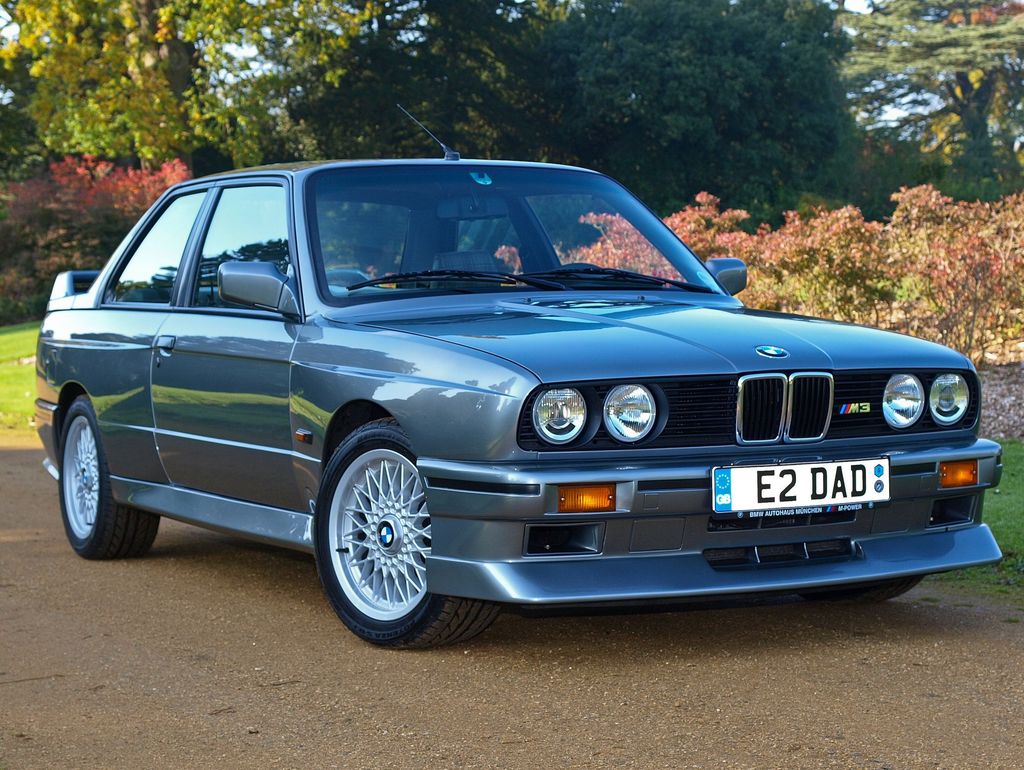
5. **1985 BMW M3 (E30)**The very first BMW M3, known by its internal code E30, was never conceived as merely a luxurious road car. Its true purpose, embedded deep within its DNA, was to dominate on the race track. Unveiled in 1986 as a homologation special, this iconic machine featured a high-revving four-cylinder engine, distinctively flared fenders, and a host of aerodynamic upgrades that immediately set it apart from its standard 3-Series siblings. This was a car built for pure, unadulterated performance.
Its aggressive stance was a direct reflection of its focused performance capabilities. On the competitive touring car circuits of Europe, the E30 M3 proved to be a formidable force, consistently dominating championships and forging BMW’s ironclad reputation as a serious performance brand. For enthusiasts on the street, it offered an unparalleled, direct connection to motorsport. Its precise handling, incredibly sharp steering, and the raw, unrefined power of its race-bred engine established a winning formula that BMW continues to refine and build upon to this very day.
Indeed, the E30 M3’s monumental success not only made the M3 nameplate BMW’s performance flagship, but it also laid the foundational blueprint for an entire dynasty of high-performance vehicles. While subsequent generations grew more powerful and technologically complex, the original E30’s purity of purpose remains the benchmark for many discerning enthusiasts. With a total production of 17,970 cars, its relatively small number has ensured that surviving examples are now highly coveted collectibles, prized for their unique character derived directly from their motorsport heritage, valuing precision and balance over brute force.
Car Model Information: 2013 BMW M3 Base
Name: BMW M3
Caption: 2021 BMW M3 Competition (G80)
Manufacturer: BMW M
Production: unbulleted list
Class: Compact executive car
Layout: unbulleted list
Related: unbulleted list
Categories: 1990s cars, 2000s cars, 2010s cars, 2020s cars, All articles with unsourced statements
Summary: The BMW M3 is a high-performance version of the BMW 3 Series, developed by BMW’s in-house motorsport division, BMW M GmbH. M3 models have been produced for every generation of 3 Series since the E30 M3 was introduced in 1986.
The initial model was available in a coupé body style, with a convertible body style made available soon after. M3 saloons were offered initially during the E36 (1994–1999) and E90 (2008–2012) generations. Since 2014, the coupé and convertible models have been rebranded as the 4 Series range, making the high-performance variant the M4. Variants of the 3 Series since then have seen the M3 produced as a saloon, until 2020, when the M3 was produced as an estate (Touring) for the first time, alongside the saloon variant.
Get more information about: BMW M3
Buying a high-performing used car >>>
Brand: BMW Model: M3
Price: $49,000 Mileage: 35,490 mi.
Read more about: The 10 Exciting Classic Sports Cars You Can Own Without Breaking the Bank
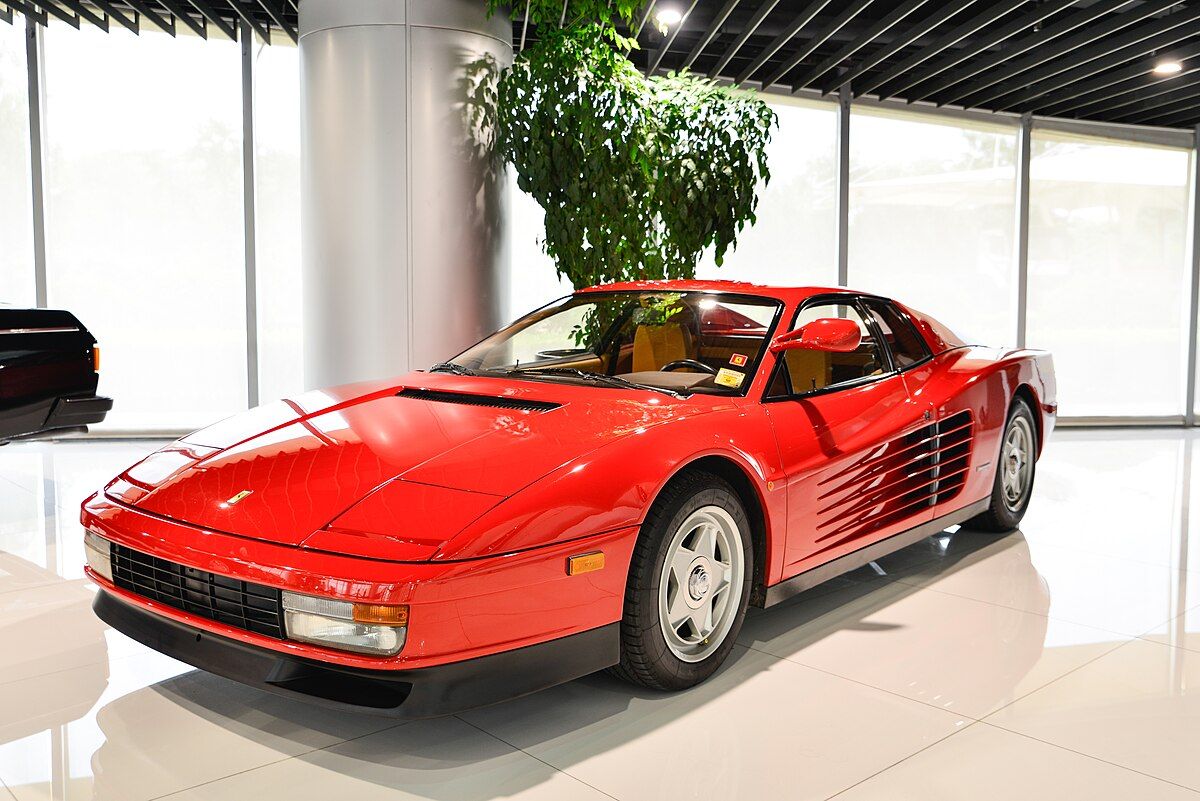
6. **1984 Ferrari Testarossa**With its instantly recognizable wide body, dramatic side strakes, and the distinctive roar of its flat-12 engine, the Ferrari Testarossa became the quintessential symbol of 1980s opulence and performance. Introduced in 1984 as the successor to the equally legendary 512 BB, the Testarossa expertly blended striking, almost theatrical aesthetics with a keen focus on both performance and surprising usability. Its mere appearance was enough to propel it to superstardom, particularly through its recurring role in the seminal television series Miami Vice, which cemented its status as an undeniable icon of the decade.
The name “Testarossa” itself, meaning “red head,” was a direct homage to the vibrant red cam covers adorning its 4.9-liter twelve-cylinder engine. This magnificent powerplant churned out an impressive 390 horsepower, enabling a top speed of 180 mph and delivering a truly exhilarating performance experience. Unlike many earlier mid-engine Ferraris, the Testarossa was engineered with practicality in mind, offering usable luggage space and significantly improved cabin cooling. This made it surprisingly more suitable for regular driving than its aggressive, exotic shape might have suggested, bridging the gap between a track weapon and a grand tourer.
The cultural impact of the Testarossa was profound and far-reaching. Its starring role as Detective Sonny Crockett’s vehicle on Miami Vice solidified its position as the definitive 1980s supercar. This massive exposure contributed to Ferrari selling 7,177 Testarossas during its production run, with total sales approaching 10,000 when accounting for later variants like the 512 TR and F512 M. The influence of its bold design, particularly the distinctive side strakes, extended far beyond the automotive world, appearing in toys, posters, and even influencing architectural trends. Once considered merely a used exotic, the Testarossa is now revered by collectors as a true classic, with values climbing sharply as demand for these unmistakable 1980s icons continues to grow.
Car Model Information: 1986 Ferrari Testarossa
Name: Ferrari Testarossa, 512 TR and F512 M
Manufacturer: Ferrari
Production: 1984–1996,9,939 produced
Assembly: Maranello
Predecessor: Ferrari Berlinetta Boxer
Class: Sports car,Grand tourer
BodyStyle: berlinetta
Layout: Rear mid-engine, rear-wheel-drive layout
Engine: Ferrari flat-12 engine,Flat-12 engine
Transmission: Manual transmission
Designer: Leonardo Fioravanti (engineer)
Categories: 1990s cars, All articles with dead external links, All articles with unsourced statements, Articles containing Latin-language text, Articles with dead external links from February 2018
Summary: The Ferrari Testarossa (Type F110) is a 12-cylinder mid-engine sports car manufactured by Ferrari, which went into production in 1984 as the successor to the Ferrari Berlinetta Boxer. The Pininfarina-designed car was originally produced from 1984 until 1991, with two model revisions following the end of Testarossa production called the 512 TR and F512 M, which were produced from 1992 until 1996. Including revised variations, almost 10,000 cars in total were produced, making it at the time one of the most mass-produced Ferrari models.
The Testarossa is a two-door coupé that premiered at the 1984 Paris Auto Show. All versions of the Testarossa were available with a rear-mounted, five-speed manual transmission. The rear mid-engine design (engine between the axles but behind the cabin) keeps the centre of gravity in the middle of the car, which increases stability and improves the car’s cornering ability, and thus results in a standing weight distribution of 40% front: 60% rear.
The original Testarossa was re-engineered for the 1992 model year and was introduced as the 512 TR (TR meaning TestaRossa), at the Los Angeles Auto Show, effectively as a completely new car, and an improved weight distribution of 41% front, 59% rear. Another new variant called the F512 M was introduced at the 1994 Paris Auto Show. The car dropped the TR initials and added the M which in Italian stood for modificata, or translated to modified, and was the final version of the Testarossa, which continued its predecessor’s weight distribution improvement of 42% front, 58% rear. The F512 M was Ferrari’s last vehicle that featured the flat-12 engine.
The Testarossa is a recognized cultural icon of the 1980s, and was popularized by media including the 1984 television series Miami Vice (from the 1986 season onward) and Sega’s 1986 video game Out Run.
Get more information about: Ferrari Testarossa
Buying a high-performing used car >>>
Brand: Ferrari Model: Testarossa
Price: $129,950 Mileage: 39,847 mi.
Read more about: The Most Iconic Cars From Classic Movies and TV: V8 Interceptor, DeLorean, and More
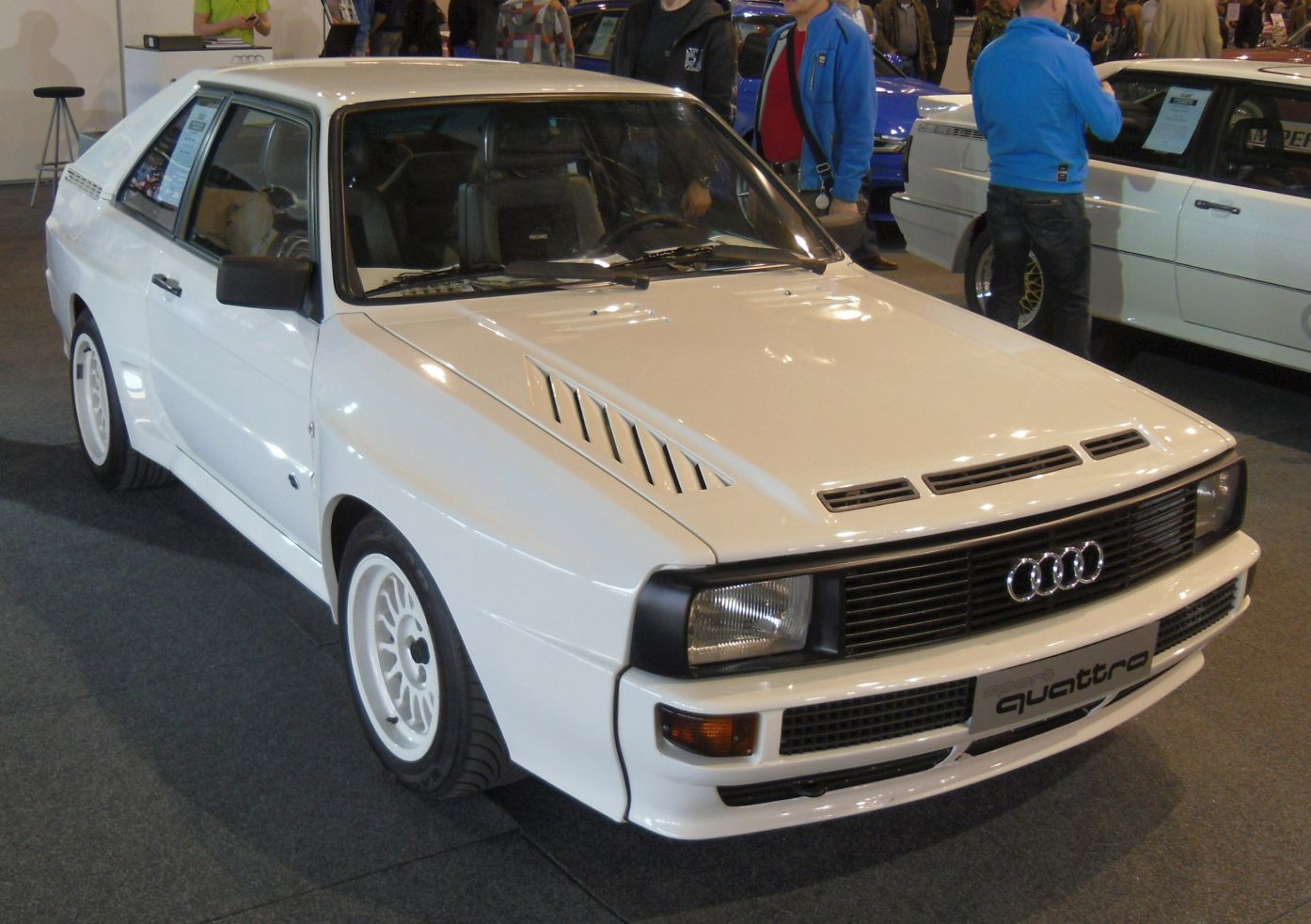
7. **1984 Audi Sport Quattro**The Audi Sport Quattro didn’t just participate in rally racing; it fundamentally reshaped the sport and, by extension, the world of high-performance road cars. Introduced in 1980, this revolutionary machine definitively proved that all-wheel drive was not merely a system for off-road utility vehicles, but a potent force for delivering unparalleled speed, control, and year-round usability in a performance-oriented automobile. It truly changed the game, laying the groundwork for how manufacturers would approach performance in the decades to come.
Powered by a distinctive turbocharged five-cylinder engine, the Audi Sport Quattro combined formidable performance with a unique sound that was as memorable as its boxy, muscular profile. The permanent all-wheel-drive system, famously dubbed “Quattro,” provided an astonishing level of traction that its rear-wheel-drive rivals simply couldn’t match. This innovative system, coupled with its shortened wheelbase, instantly made it a rally icon and set a new trajectory for high-performance all-wheel-drive vehicles across the industry.
For countless automotive enthusiasts, the Audi Sport Quattro marked a pivotal moment, transforming Audi from a respected but mainstream brand into a serious contender in the high-performance arena. The success of the Quattro’s all-wheel-drive system quickly permeated Audi’s entire lineup, becoming a core element of the brand’s identity and influencing countless other manufacturers. The technology developed in these groundbreaking rally cars, particularly the Sport Quattro S1 with its immense power, continues to shape modern performance vehicles, underscoring the enduring legacy of the Quattro’s technological revolution and its impact on automotive history.
Car Model Information: 2022 Mazda CX-5 2.5 S Premium
Name: Audi Quattro B2 (85)
Manufacturer: Audi
Aka: Ur-Quattro
Production: 1980–1991,11,452 produced
Assembly: Ingolstadt
Designer: Jörg Bensinger,Walter Treser,Ferdinand Piëch,Franz Tengler (transmission),Martin Smith (designer)
Class: Mid-size car,rallying
BodyStyle: coupé
Platform: Volkswagen B platform#B2
Related: Audi 80#B2
Layout: longitudinal engine,Front-engine, four-wheel-drive layout,all-wheel drive
Engine: SOHC,2.2 L SOHC I5 (1987–1989),DOHC
Transmission: manual transmission
Wheelbase: 2524 mm
Abbr: on
Length: 4404 mm
Width: 1722 mm
Height: 1346 mm
Weight: 1290 kg
Sp: uk
Predecessor: Audi 100 Coupé S
Successor: Audi S2
Categories: 1990s cars, All-wheel-drive vehicles, Articles with hAudio microformats, Articles with short description, Audi racing cars
Summary: The Audi Quattro is a road and rally car, produced by the German automobile manufacturer Audi, part of the Volkswagen Group. It was first shown at the 1980 Geneva Motor Show on 3 March. Production continued through 1991.
Get more information about: Audi Quattro
Buying a high-performing used car >>>
Brand: Audi Model: Sport Quattro
Price: $25,680 Mileage: 32,780 mi.
Read more about: From DeLorean to Ferrari: Iconic Cars That Defined the 1980s
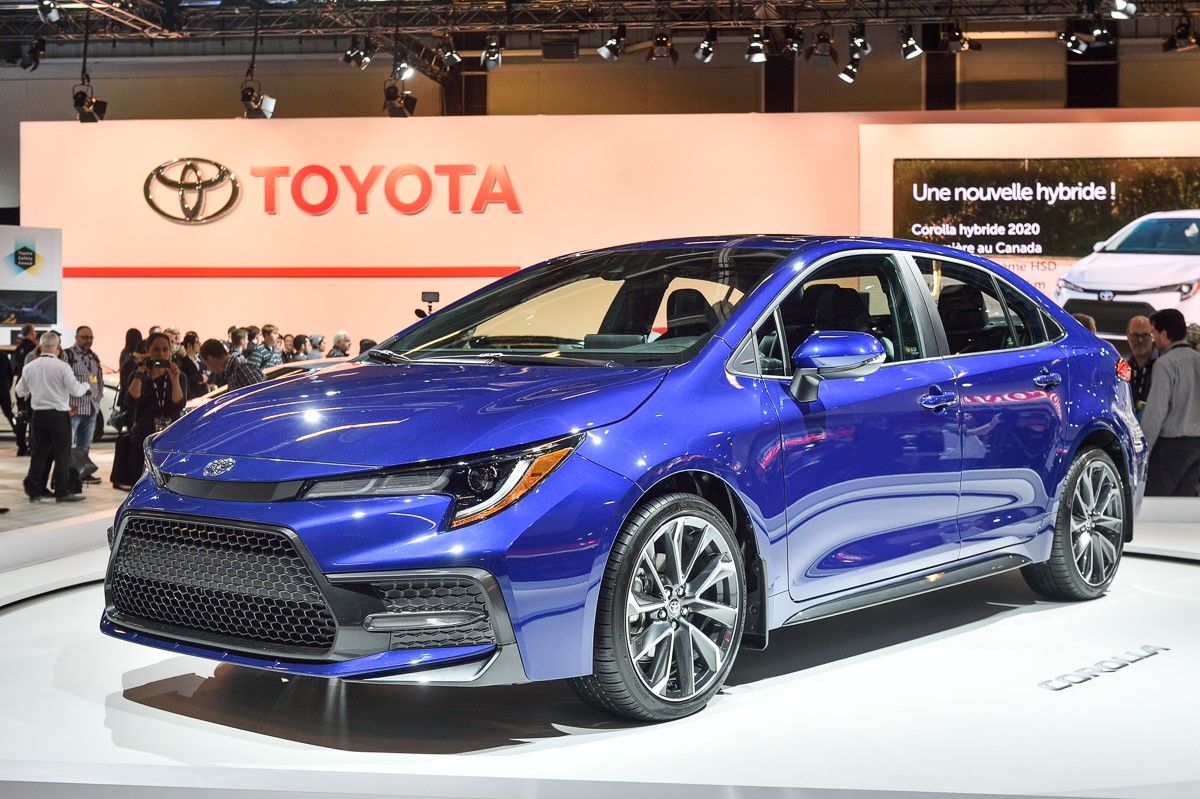
8. **Toyota MR2 – The Affordable Mid-Engine Dream**Toyota launched the MR2 in 1984 with an ambitious goal: to democratize the exhilarating experience of a mid-engine sports car, making it accessible to a broader audience at an affordable price point. Its lightweight construction, incredibly sharp handling, and distinctive angular styling ensured it immediately stood out in the automotive landscape. The name itself, an elegant acronym for “Midship Runabout 2-seater,” perfectly captured its essence, highlighting its unique engine layout and purpose as a nimble, engaging, two-seat sports machine that prioritized pure driving enjoyment.
While the MR2 cleverly utilized Toyota’s famously reliable 4A-GE engine and C52 gearbox, components shared with popular Corolla models, its dedicated mid-engine chassis and sleek body were meticulously developed specifically for this groundbreaking vehicle, a testament to Toyota’s commitment. Power outputs, ranging from a respectable 112 to 145 horsepower depending on the market and specific trim level, might appear modest on paper when compared to its exotic European counterparts. However, the MR2’s incredibly low curb weight and exceptional chassis balance allowed it to deliver a level of driving fun and responsiveness that surprisingly rivaled far pricier sports cars of its era, truly offering more than its specifications suggested.
The MR2’s arrival signaled a profound shift as Japan began asserting its formidable presence in automotive segments long dominated by established European brands. Alongside contemporaries like the Mazda RX-7 and Nissan 300ZX, Toyota’s innovative new mid-engine coupe powerfully demonstrated that Japanese automakers were fully capable of designing and building true performance machines, not just reliable daily drivers. This pivotal moment fundamentally reshaped global perceptions of Japanese automotive prowess, elevating them as serious contenders in sports car showrooms worldwide, a transformative trend that would only accelerate with even greater impact throughout the 1990s and beyond.
Car Model Information: 1988 Toyota MR2 Supercharged
Name: Toyota MR2
Caption: Second generation MR2
Manufacturer: Central Motors
Aka: Toyota MR (France and Belgium)
Production: 1984–2007
Assembly: Sagamihara, Kanagawa
Class: Sports car
Layout: Rear mid-engine, rear-wheel-drive layout
ModelYears: 1985–2007
Categories: 1990s cars, 2000s cars, All Wikipedia articles written in American English, All articles containing potentially dated statements, All articles needing additional references
Summary: The Toyota MR2 is a line of two-seater, mid-engined, rear-wheel-drive sports cars, manufactured in Japan and marketed globally by Toyota from 1984 until 2007 over three generations: W10 (1984–1989), W20 (1989–1999) and W30 (1999–2007). It is Japan’s first rear mid-engined production car.
Conceived as a small, economical and sporty car, the MR2 features a straight-four engine, transversely mounted in front of the rear axle, four-wheel disc brakes, and fully independent coilover suspension – MacPherson struts on each wheel.
The name MR2 stands for either “mid-ship run-about 2-seater” or “mid-engine, rear-wheel-drive, 2-seater”. In French-speaking markets, the vehicle was renamed Toyota MR because the abbreviation “MR2” sounds like the profanity “merdeux” when spoken in French.
Get more information about: Toyota MR2
Buying a high-performing used car >>>
Brand: Toyota Model: MR2
Price: $27,000 Mileage: 36,611 mi.
Read more about: The 10 Exciting Classic Sports Cars You Can Own Without Breaking the Bank
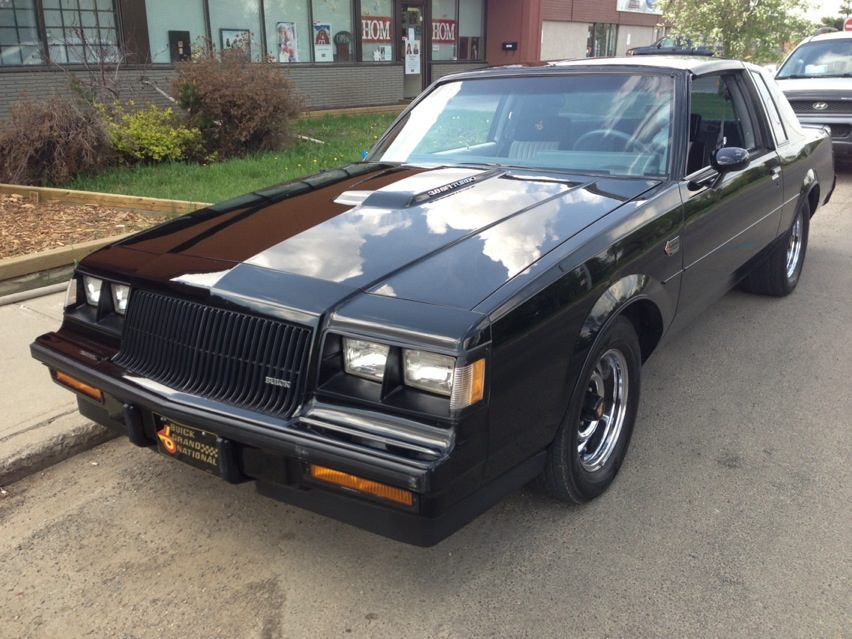
9. **Buick Grand National – America’s Dark Horse**In an era where American performance was still navigating the complex aftermath of stringent emissions regulations, often struggling to regain its pre-1970s swagger, the Buick Grand National emerged as a formidable and wholly unexpected challenger, dramatically altering that narrative. Built upon the unassuming Regal coupe, it eschewed flashy chrome for a menacing, all-black aesthetic, creating a stealthy yet undeniably powerful presence. Beneath its understated exterior housed a turbocharged V6 engine that possessed the astonishing ability to humble many of its traditional V8-powered rivals on the street, earning it a legendary status among enthusiasts.
The ultimate iteration of this automotive powerhouse arrived in 1987 with the GNX, a highly anticipated special collaboration developed in partnership with McLaren Performance Technologies, a name synonymous with high-performance engineering. This exclusive partnership pushed the car’s performance capabilities to unprecedented levels, truly unleashing its full, latent potential. While its turbocharged 3.8-liter V6 officially rated at a stout 276 horsepower, many enthusiasts and critics harbored a strong suspicion that its true output was significantly higher, a belief often confirmed by its real-world performance. Indeed, at the drag strip, the GNX consistently posted blistering quarter-mile times, often on par with exotic cars commanding prices several times its own, cementing its reputation as an undeniable American muscle icon of the decade.
The Grand National brazenly defied nearly every conventional rule in the traditional muscle car playbook. It famously eschewed the revered V8 engine, instead embracing forced induction, a then-unconventional choice for American performance. Moreover, it remarkably hailed from Buick, a brand more widely associated with plush comfort and conservative styling than with raw, unadulterated speed. Yet, this unconventional formula proved to be a resounding success, culminating in one of the most memorable and impactful American performance cars of the 1980s. It powerfully demonstrated that innovation and a daring approach could, in fact, outperform long-held traditions, securing its place as a rare and significant highlight during a challenging yet creatively fertile decade for domestic manufacturers.
Car Model Information: 2021 Volkswagen Atlas 3.6L SEL
Name: Buick Regal
Caption: 2020 Regal Sportback
Manufacturer: Buick
ModelYears: Unbulleted list
Sp: us
Predecessor: Buick Skylark#Second generation (1968–1972),Buick Century
Successor: Buick LaCrosse
Categories: 1980s cars, 1990s cars, 2000s cars, 2010s cars, 2020s cars
Summary: The Buick Regal is a line of mid-size cars marketed by Buick since 1973. Serving as the premium mid-size/intermediate car of the Buick product range for nearly its entire production, the Regal initially served as the divisional counterpart of the Pontiac Grand Prix and Oldsmobile Cutlass Supreme; since the late 2000s, the model line has been derived from the Opel Insignia. The Regal also serves as the basis of the high-performance Grand National, Gran Sport (GS), and Buick GNX coupes.
Through its production, the Regal has been marketed under a wide variety of body styles, including two-door coupes and four-door sedans (currently in production), along with a 5-door liftback sedan and a 5-door station wagon; the latter (the 2018-2020 Regal TourX) was the first Buick station wagon marketed since the retirement of both the Century and Roadmaster Estates after 1996. The turbocharged LD5 3.8L V6 used in the second generation was used to showcase the motorsports presence of the brand; though offered with other vehicles (including Chevrolets and Pontiacs), the turbocharged engine is most commonly associated with the Regal. During the 1990s, the V6 regained forced induction, with a supercharger replacing the turbocharger.
In 1999, General Motors commenced sales of its vehicles in China, with the Buick Regal serving as its introductory model of the joint venture SAIC-GM. After 2004, Buick retired the model line in North America, as it replaced both the Regal and the Century with the Buick LaCrosse. Following the introduction of the second-generation Regal for China for 2008, the model line returned to North America for the 2011 model year, slotted slightly below the LaCrosse. Following the introduction of the sixth-generation Regal (sourced entirely from Opel) for 2018, GM sold Opel to PSA (now Stellantis), ending sales in North America after the 2020 model year. Currently, the Insignia B-derived Regal remains in production by SAIC-GM.
Get more information about: Buick Regal
Buying a high-performing used car >>>
Brand: Buick Model: Grand National
Price: $22,989 Mileage: 93,524 mi.
Read more about: Buckle Up: These 12 American Cars Looked Cool, But Were an Absolute Nightmare to Own

10. **Volkswagen Golf GTI Mk2 – Hot Hatch Evolution**The second-generation Volkswagen Golf GTI, introduced in 1984, arrived on the scene with the challenging yet invigorating task of building upon the groundbreaking success of its revolutionary predecessor. With remarkable finesse, it managed to evolve the concept, becoming slightly larger and more refined than the original, yet meticulously retaining that quintessential blend of practical usability and exhilarating performance that had already solidified the GTI nameplate as an undeniable legend. This masterful evolution proved, beyond a shadow of a doubt, that the hot hatch concept was far more than a fleeting automotive trend; it was a permanent fixture.
Subtle yet distinct styling cues immediately set the Mk2 GTI apart, ensuring its identity was unmistakably GTI from every angle. Thoughtfully placed red trim accents and uniquely designed wheels contributed to a signature look that fans instantly recognized and deeply admired, signifying its sporting intent without being overly ostentatious. Engine options thoughtfully varied across different markets to cater to diverse regulations and preferences, with the most coveted and sought-after being the highly capable 16-valve KR engine, which made its debut in 1986. This powerhouse produced an impressive 139 PS (approximately 137 hp) in European models, imbuing the compact hatchback with genuine performance credibility and setting a new, elevated benchmark for its class.
The Mk2 GTI’s overwhelming and widespread success unequivocally cemented the hot hatch as an enduring and permanent fixture in the global automotive world. While the first generation had famously created the category, the second generation refined it, proving its long-term viability and inspiring an entire wave of competitors across various manufacturers. Before long, nearly every major automotive brand felt compelled to offer its own performance-oriented compact hatchback, aiming to capture a piece of the burgeoning market segment the GTI had pioneered. Today, the Mk2 commands a fiercely loyal and dedicated fan base, with pristine examples increasingly becoming coveted collectibles, prized for their quintessential 1980s styling, engaging analog driving feel, and remarkable everyday usability, truly embodying the spirit of practical and accessible performance.
Car Model Information: 2022 Mazda CX-5 2.5 S Premium
Name: Volkswagen Golf Mk2 (19E)
Manufacturer: Volkswagen
Production: September 1983–1992,1985–1992 (Yugoslavia),6.3 million units
Assembly: Wolfsburg,Zwickau,Audi Brussels,Sarajevo,New Stanton, Pennsylvania,Puebla, Puebla,Uitenhage,Graz
Predecessor: Volkswagen Golf Mk1
Successor: Volkswagen Golf Mk3
Class: Small family car
BodyStyle: hatchback
Layout: Front-engine, front-wheel-drive layout,front-wheel drive
Platform: Volkswagen Group A platform#A2
Engine: ubl
Transmission: manual transmission
Wheelbase: 2470 mm
Abbr: on
Length: 3985 mm
Order: flip
Width: convert
Height: 1415 mm
Weight: convert
Related: Volkswagen Jetta (A2),Volkswagen Corrado,SEAT Toledo
Designer: Herbert Schäfer
Categories: 1990s cars, All-wheel-drive vehicles, All articles needing additional references, All articles with style issues, All articles with unsourced statements
Summary: The Volkswagen Golf Mk2 is a hatchback, the second generation of the Volkswagen Golf and the successor to the Volkswagen Golf Mk1. It was Volkswagen’s highest volume seller from 1983 and ended in (German) production in late 1992, to be replaced by the Volkswagen Golf Mk3. The Mk2 was larger than the Mk1; its wheelbase grew slightly (+ 75 mm (3.0 in)), as did exterior dimensions (length + 180 mm (7.1 in), width + 55 mm (2.2 in), height + 5 mm (0.2 in)). Weight was up accordingly by about 120 kg (260 lb). Exterior design, developed in-house by VW design director Schäfer, kept the general lines of its Giugiaro-designed predecessor, but was slightly more rounded. All told, about 6.3 million second-generation Golfs were built.
Get more information about: Volkswagen Golf Mk2
Buying a high-performing used car >>>
Brand: Volkswagen Model: Golf GTI Mk2
Price: $25,680 Mileage: 32,780 mi.
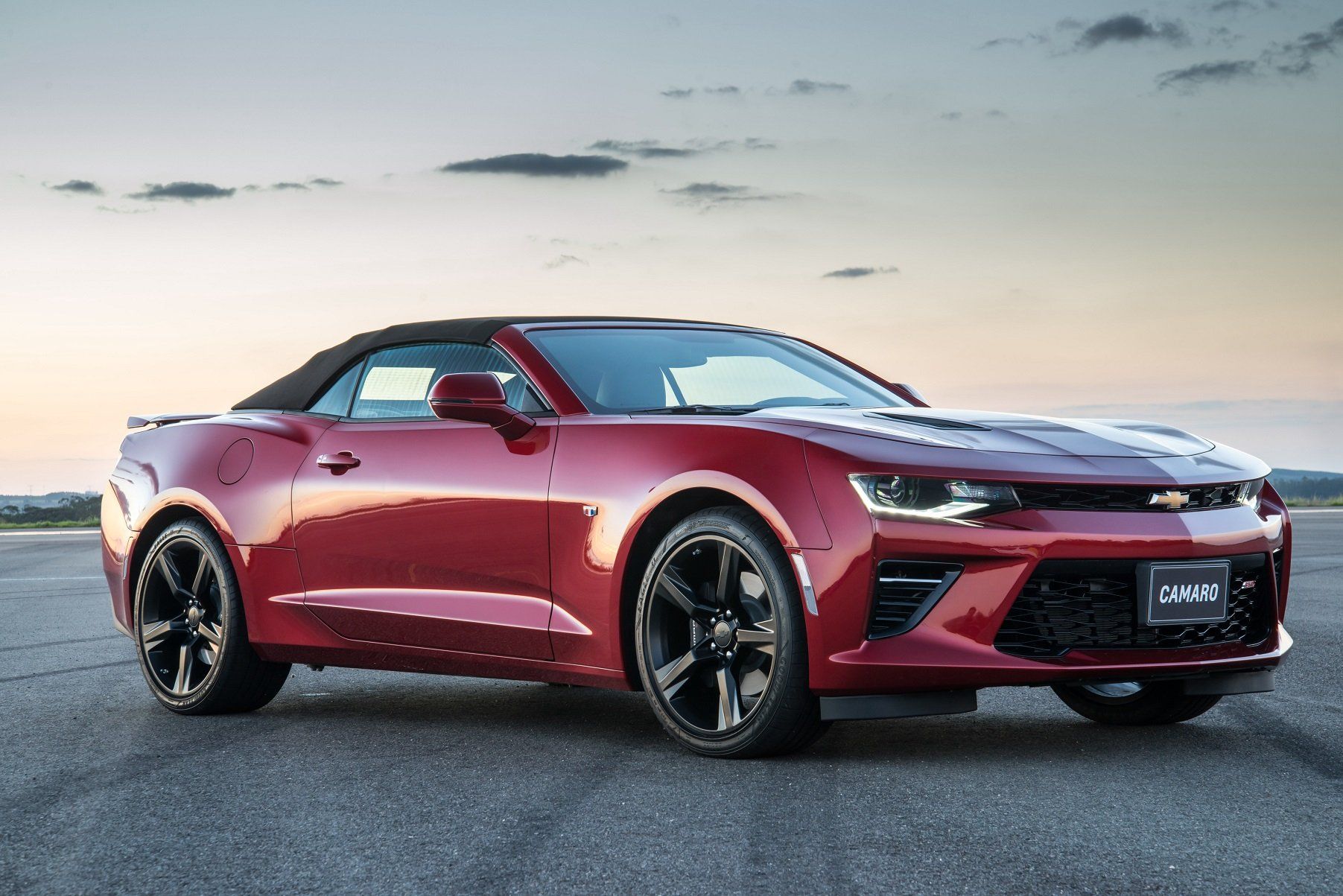
11. **Chevrolet Camaro IROC-Z – Mullet Optional**The Chevrolet Camaro IROC-Z, a true emblem of its time, roared onto the automotive scene in 1985, proudly bearing the name of the International Race of Champions, and effectively ushered American muscle into an exhilarating new era. It boasted an aggressively styled body kit, accentuated by bold, eye-catching decals that left no doubt about its performance intentions. Complementing its potent aesthetics was a lowered, meticulously performance-tuned suspension that noticeably sharpened its handling capabilities, a significant step forward for the Camaro, ensuring it wasn’t just about raw power but also refined dynamics.
Prospective buyers had the compelling choice between a robust 5.0-liter V8 engine or, later in its impactful production run, an even more formidable 5.7-liter V8, offering increasing levels of potency. Both engine options consistently delivered the kind of exhilarating straight-line punch that had long been synonymous with the legendary Camaro nameplate, tying it irrevocably to raw, unadulterated American performance. The IROC-Z rapidly ascended to the status of a cultural icon, its accessible pricing democratizing true performance and making it a ubiquitous presence at cruise nights, drag strips, and high school parking lots across the entire country, a visible symbol of 1980s automotive aspirations.
Its widespread appeal transcended traditional demographic boundaries, reaching far beyond the typical muscle car enthusiast. While deeply embraced by traditional muscle car aficionados who cherished its heritage, a burgeoning new generation of young drivers enthusiastically adopted it as their definitive symbol of 1980s car culture, making it a truly cross-generational icon. The IROC-Z played a crucial role in sustaining American performance car culture during a challenging period for the industry, proving that affordable, everyday performance was still a viable and thrilling proposition. It also powerfully underscored the growing importance of handling prowess, with its sharper suspension demonstrating that cornering ability was becoming as critical as sheer straight-line speed, a progressive shift in American performance car philosophy that continues to influence modern Camaros today.
Car Model Information: 2018 Chevrolet Camaro 1LS
Name: Chevrolet Camaro
Manufacturer: Chevrolet
Production: 1966–2002,2009–2023
ModelYears: 1967–2002,2010–2024
Class: Pony car
BodyStyle: coupe,convertible
Platform: GM F platform,GM Zeta platform,GM Alpha platform
Layout: Front-engine, rear-wheel-drive layout
Categories: 1970s cars, 1980s cars, 1990s cars, 2+2 coupés, 2000s cars
Summary: The Chevrolet Camaro is a mid-size American automobile manufactured by Chevrolet, classified as a pony car. It first went on sale on September 29, 1966, for the 1967 model year and was designed to compete with the Ford Mustang. The Camaro shared its platform and major components with the Firebird, produced by General Motors’ Pontiac division that was also introduced for the 1967 model year.
Four distinct generations of the Camaro were developed before production ended in 2002. The nameplate was revived on a concept car that evolved into the fifth-generation Camaro; production started on March 16, 2009.
Production of the sixth generation of the Camaro ended in December 2023, for the 2024 model year.
Get more information about: Chevrolet Camaro
Buying a high-performing used car >>>
Brand: Chevrolet Model: Camaro
Price: $19,125 Mileage: 69,196 mi.
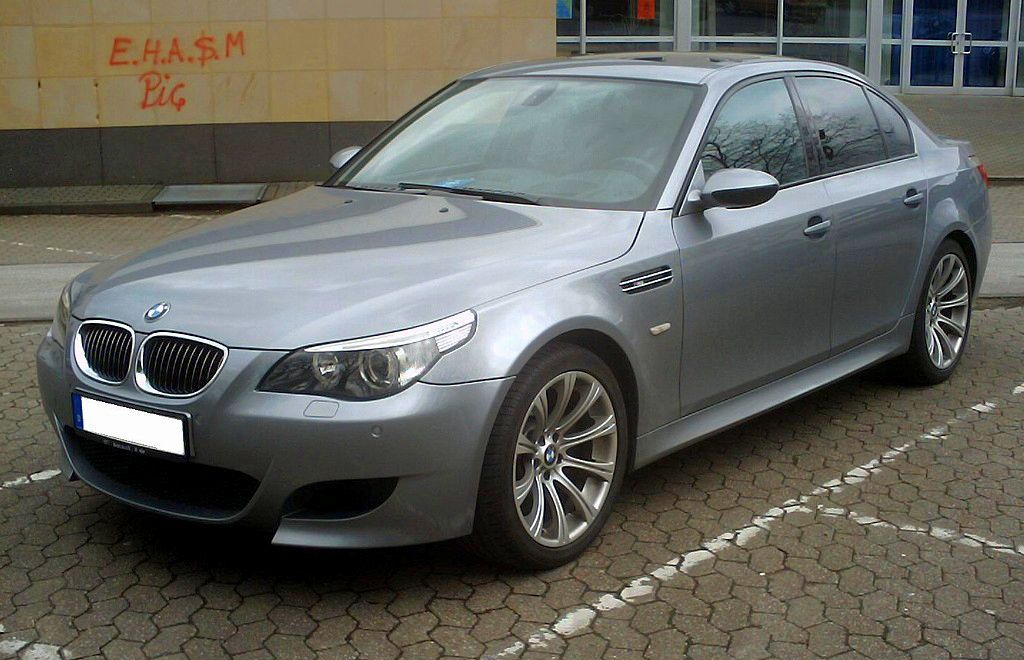
12. **BMW M5 (E28) – The Stealth Supercar**BMW’s inaugural M5, which made its highly anticipated debut in 1985, didn’t merely join an existing category; it audaciously carved out and single-handedly defined the blueprint for the modern super sedan, a concept that would forever change the luxury automotive landscape. Meticulously built upon the refined executive-class 5-Series chassis, it ingeniously housed a painstakingly modified version of the legendary M1 supercar’s potent inline-six engine, churning out an impressive 282 horsepower. The remarkable outcome was nothing short of supercar-level pace seamlessly combined with the practicality, comfort, and understated elegance of everyday usability, a truly revolutionary proposition for its time.
Visually, the M5 (E28) maintained an exquisite level of understatement, a key element of its unique allure. Only a few subtle, discerning details – like discreet badging or slightly wider wheels – distinguished it from a standard 5-Series, a characteristic that significantly contributed to its undeniable charm and “sleeper” appeal. This deliberate visual restraint became an integral part of its identity, offering a unique proposition: discerning executives could effortlessly drive an M5 to the office, blending in without drawing undue attention, yet possess the thrilling capability to leave virtually any coworker behind on the highway, with performance credentials that equaled or even surpassed many dedicated sports cars of the era.
The E28 M5 introduced a groundbreaking yet elegantly straightforward formula that would forever reshape the automotive landscape: take your most refined and comfortable sedan and imbue it with your most powerful and performance-oriented engine. This ingenious concept proved so profoundly effective and desirable that other luxury automotive brands swiftly followed suit, eager to replicate its success. Today, the expectation of a high-performance variant is deeply ingrained and almost mandatory in nearly every premium sedan maker’s product lineup, a direct and enduring testament to the M5’s pioneering spirit and its lasting impact on automotive design and marketing. With only 2,241 units built worldwide, its inherent scarcity, coupled with its immense historical importance and thrilling driving experience, has solidified the first M5’s status as one of BMW’s most coveted and valuable modern classics.
Car Model Information: 1988 BMW M5 Base
Name: BMW M5
Caption: F90 M5 (left) and E28 M5 (right)
Manufacturer: BMW M
Production: 1984–present
Class: Executive car
Layout: Front-engine, rear-wheel-drive,(1984–1995, 1998–2016)
Related: BMW 5 Series,BMW M6
Categories: 1990s cars, 2000s cars, 2010s cars, 2020s cars, All articles with bare URLs for citations
Summary: The BMW M5 is a super high-performance variant of the BMW 5 Series marketed under the BMW M sub-brand. It is considered an iconic vehicle in the sports saloon category. The M5 has always been produced in the saloon (sedan, US English) body style, but in some countries the M5 has also been available as an estate/touring (wagon, US English) from 1992 to 1995, from 2006 to 2010, and since 2024.
The first M5 model was hand-built beginning in late 1984 on the E28 535i chassis with a modified engine from the M1 that made it the fastest production saloon at the time. M5 models have been produced for every generation of the 5 Series since 1984, with occasional gaps in production (1995 to 1998, 2023 to 2024).
Get more information about: BMW M5
Buying a high-performing used car >>>
Brand: BMW Model: M5
Price: $97,999 Mileage: 26,556 mi.
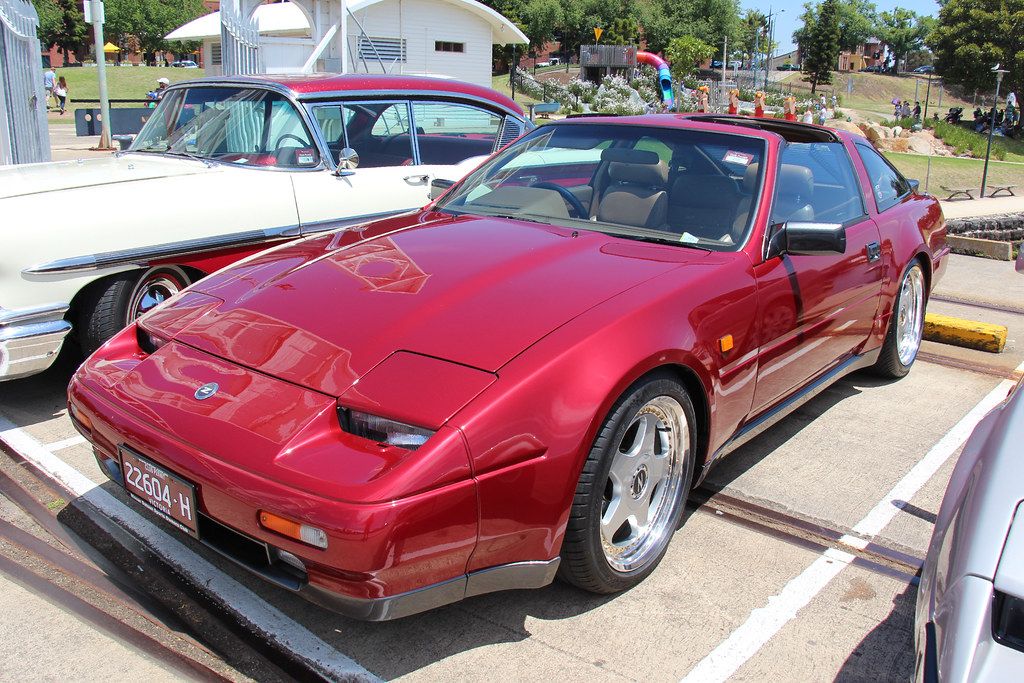
13. **Nissan 300ZX (Z31) – Digital Dash Dreams**The Z31 generation of the Nissan 300ZX, launched in 1983, represented a decisive and forward-thinking leap, firmly propelling Nissan’s renowned sports car lineage into the burgeoning electronic age. As the successor to the venerable and beloved 280ZX, it showcased a sharper, more contemporary styling that perfectly encapsulated the futuristic aesthetics of the new decade, moving away from the more organic lines of its predecessors. Moreover, it boasted an array of cutting-edge features that perfectly aligned with the technological zeitgeist of the 1980s, making it a true product of its time.
Buyers of the Z31 were treated to an exciting glimpse into automotive modernity, experiencing features previously reserved for science fiction. Options included innovative digital dashboard displays that glowed with a futuristic aura, sophisticated voice warning systems that spoke to the driver, and the undeniable thrill of turbocharged performance. Its distinctive wedge shape, elegantly complemented by the era’s wildly popular pop-up headlights, not only captured the dynamic look of the 1980s perfectly but also contributed to its aerodynamic efficiency. While several engine options were available, the turbocharged V6 consistently delivered the most exhilarating driving experience, producing a robust 200 horsepower in its top form between 1987 and 1989, enabling it to hit 60 mph in under 7 seconds, a respectable figure for the period.
The Z-car, with the introduction of the Z31, had undeniably transitioned from the analog simplicity of the 1970s into the digital sophistication of the 1980s, all while remarkably retaining its cherished performance edge and sporting soul. This generation marked a significant philosophical shift for the Z-car, subtly moving it from the realm of a pure sports car towards a more refined grand tourer. This evolution offered an enhanced blend of luxurious features, greater overall refinement, and advanced technology, which significantly broadened its market appeal. In its most successful year, Nissan proudly sold over 70,000 units in the United States, cementing its commercial success and proving the Z31’s popular resonance among consumers seeking style, technology, and performance.
Car Model Information: 1986 Nissan 300ZX 2
Name: Nissan 300ZX
Class: Grand Tourer
Manufacturer: Nissan
Production: 1983–2000
Assembly: ubl
Aka: Nissan Fairlady Z
Layout: Front-engine, rear-wheel-drive layout
Predecessor: Nissan Fairlady Z (S130)
Successor: Nissan 350Z
Categories: 1990s cars, 2+2 coupés, All articles needing additional references, All articles with unsourced statements, Articles needing additional references from May 2021
Summary: The Nissan 300ZX is a sports car that was produced across two different generations. As with all other versions of the Z, the 300ZX was sold within the Japanese domestic market under the name Fairlady Z.
It was sold in Japan from 1983 to 2000 and in the United States from 1984 to 1996, the 300ZX name followed the numerical convention initiated with the original Z car, the Nissan Fairlady Z (S30), which was marketed in the U.S. as the 240Z. The addition of the “X” to the car’s name was a carryover from its predecessor, the 280ZX, to signify the presence of more luxury and comfort oriented features. The first generation 300ZX known as the Z31 model was produced from 1983 through 1989 and was a sales success becoming the highest volume Z-car for Nissan.
To become even more competitive in the sports car market, the second generation 300ZX was driven up-market. It was redesigned to be faster and to feature more advanced technology, but came with a higher price than its predecessor, with consecutive price increases each model year of availability. As such, sales dwindled each year, a trend in the higher end sports car market at the time, and Nissan placed a hiatus on selling new Nissan Z-Cars to the US after the 1996 model year, though the car would continue to be sold in the Japan domestic market until 2001 in low production numbers.
Car and Driver placed the Z32 on its Ten Best list for seven consecutive years, each model year of its availability in the United States. Motor Trend awarded it as the 1990 Import Car of the Year. The Nissan 350Z, officially the Z33 generation Z-Car, succeeded the 300ZX in 2003.
Get more information about: Nissan 300ZX
Buying a high-performing used car >>>
Brand: Nissan Model: 300ZX
Price: $5,900 Mileage: 135,000 mi.
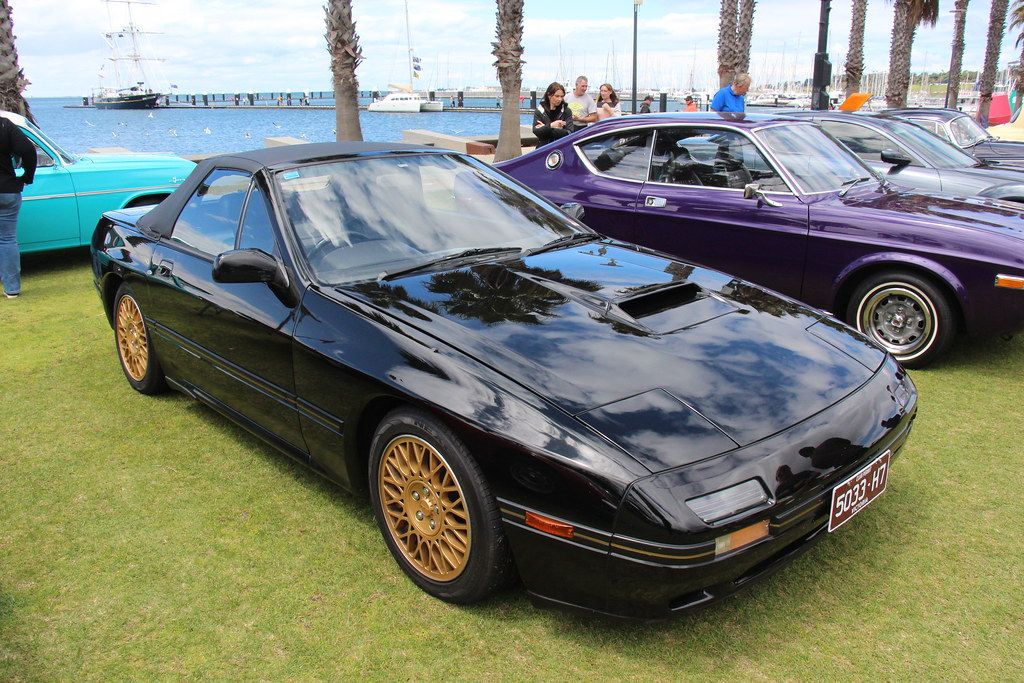
14. **Mazda RX-7 (FC3S) – The Rotary Challenger**The second-generation Mazda RX-7, known internally by its chassis code FC3S, made its grand debut in 1985, poised and ready to carry the unique and enigmatic rotary engine into a new, more refined era of sports car performance. This iteration featured noticeably sharper, more contemporary styling than its predecessor, a significantly improved and more sophisticated suspension system, and enhanced aerodynamics, all meticulously engineered to contribute to a vehicle that handled with greater precision and delivered a more polished, sophisticated feel on the road. It was a careful evolution that maintained the exhilarating essence of the RX-7 while elevating its overall driving dynamics and comfort.
Prospective buyers were presented with the engaging choice between naturally aspirated and turbocharged versions of the distinctive 1.3-liter rotary engine, a testament to Mazda’s unwavering commitment to this unique powerplant. While both options provided an undeniably fun and responsive driving experience, it was the turbocharged models that truly gave the RX-7 the potent punch needed to credibly rival more expensive European sports cars of its time, offering compelling performance at a far more accessible price point. On the race track, particularly in demanding IMSA competition, the RX-7 consistently proved its formidable capabilities, its lightweight construction and inherent high-revving rotary power enabling it to bravely challenge and often outperform cars equipped with significantly larger, conventional piston engines.
Today, the FC3S is affectionately remembered by enthusiasts as the crucial transitional bridge between the raw, unfiltered driving experience of the first-generation RX-7 and the highly advanced, almost futuristic FD generation that would follow in the 1990s. Its enduring commercial and racing success ensured Mazda remained a formidable and competitive force in the global sports car segment, and firmly cemented the RX-7’s reputation as one of the standout Japanese sports cars of the 1980s, defying convention with its unique engine. Its distinct rotary engine, combined with its exquisitely balanced chassis, pop-up headlights, and impressive track record, continues to captivate enthusiasts, highlighting Mazda’s innovative spirit and unwavering commitment to distinctive engineering and driving pleasure.
Car Model Information: 1986 Mazda RX-7 GXL 2D Coupe
Name: Mazda RX-7
Caption: 1994 Mazda RX-7 R2 (FD3S)
Manufacturer: Mazda
Aka: Mazda Savanna RX-7 (Japan, 1978–1991),Mazda ɛ̃fini RX-7 (Japan, 1991–1997)
Class: Sports car
Production: 1978–2002,811,634 produced
Assembly: Hiroshima
Platform: Mazda F platform
Layout: Front-engine, rear-wheel-drive layout#Front mid-engine, rear-wheel-drive layout
Predecessor: Mazda RX-3
Successor: Mazda RX-8
Categories: 1980s cars, 1990s cars, 2000s cars, 24 Hours of Le Mans race cars, All articles needing additional references
Summary: The Mazda RX-7 is a front mid engine, rear-wheel-drive, rotary engine-powered sports car, manufactured and marketed by Mazda from 1978 through 2002 across three generations, all of which incorporated the use of a compact, lightweight Wankel rotary engine.
The first-generation RX-7, codenamed SA (early) and FB (late), is a two-seater two-door hatchback coupé. It featured a 12A carbureted rotary engine as well as the option for a 13B rotary engine with electronic fuel injection in later years. The second-generation RX-7, carrying the internal model code FC, was offered as a two-seater coupé with a 2+2 option available in some markets, as well as in a convertible body style. This was powered by the 13B rotary engine, offered in naturally aspirated or turbocharged forms. The third-generation RX-7, model code FD, was offered as a two-seater coupé with a 2+2 version offered as an option for the Japanese market. It featured a sequentially turbocharged 13B REW engine.
More than 800,000 RX-7s were manufactured over its lifetime.
Get more information about: Mazda RX-7
Buying a high-performing used car >>>
Brand: Mazda Model: RX-7
Price: $13,991 Mileage: 52,352 mi.
As we reflect on these incredible machines, it becomes abundantly clear that the 1980s was far more than just a decade of big hair, iconic music, and neon lights; it was a veritable golden age of automotive experimentation and daring innovation. From the accessible thrill of a mid-engine two-seater proving that excitement needn’t break the bank, to the surprising might of a turbocharged V6 sedan defying traditional muscle car norms, and the technological marvels of digital dashboards heralding a new era of connectivity, the cars of this era weren’t merely about getting from point A to point B. They were about pushing limits, defying expectations, and embedding a unique blend of performance, style, and ingenuity into every curve and component. These diverse and captivating vehicles continue to inspire and captivate enthusiasts and collectors alike, not merely as static relics of the past, but as vibrant, roaring testaments to a time when the automotive world truly let its imagination run wild, leaving an indelible mark on the roads, in our cultural memory, and in our hearts.


